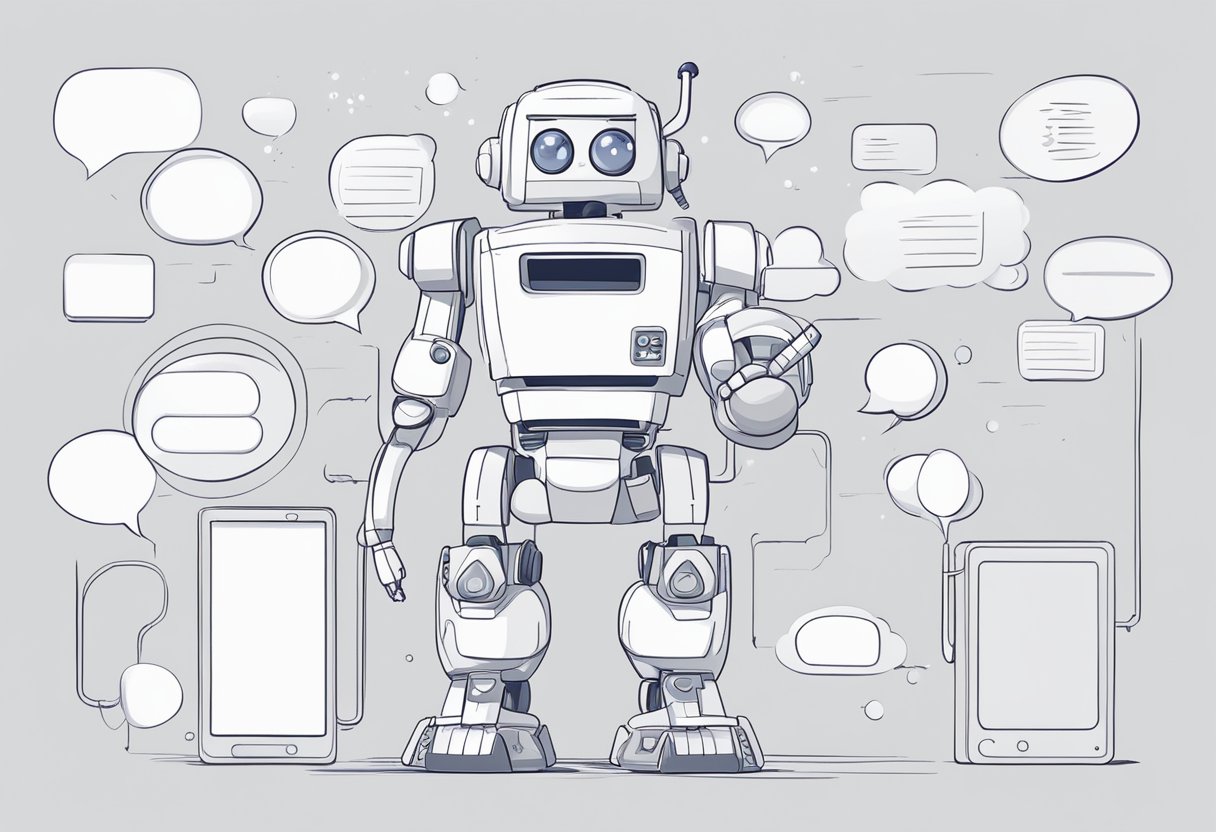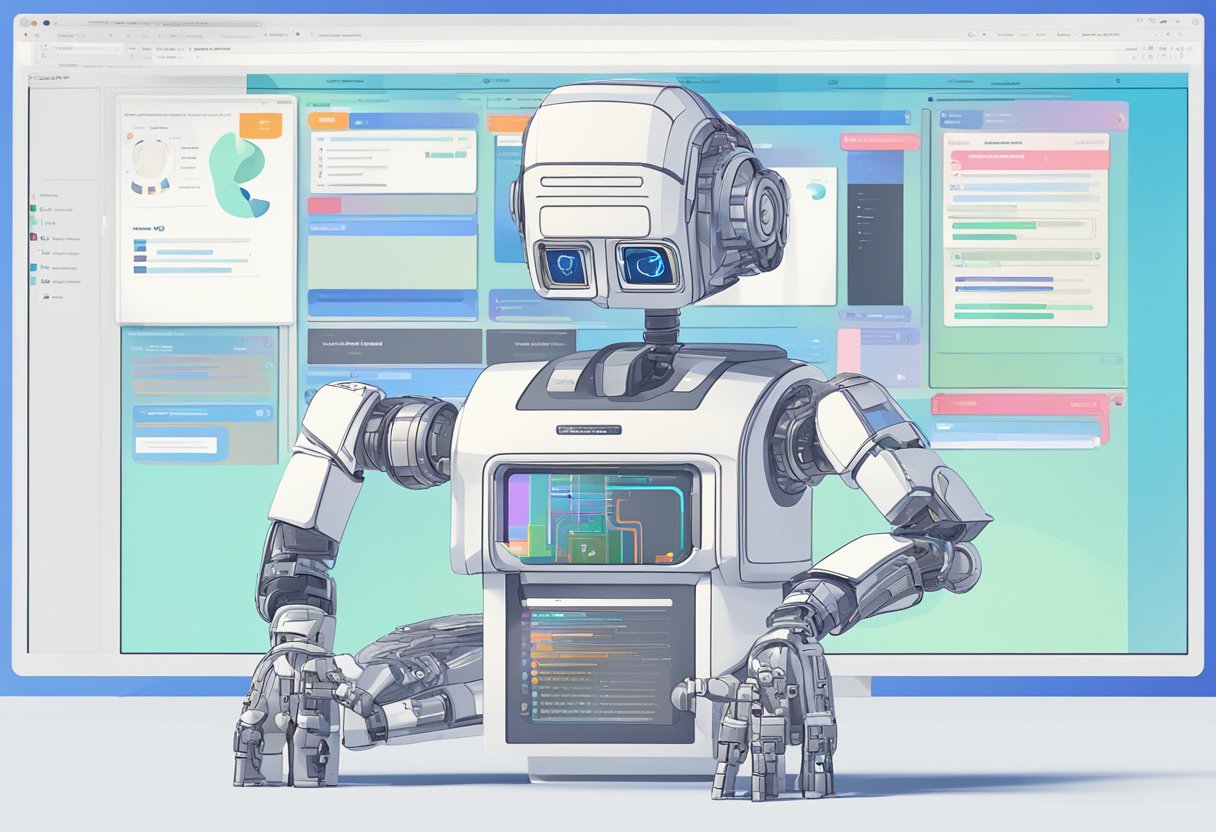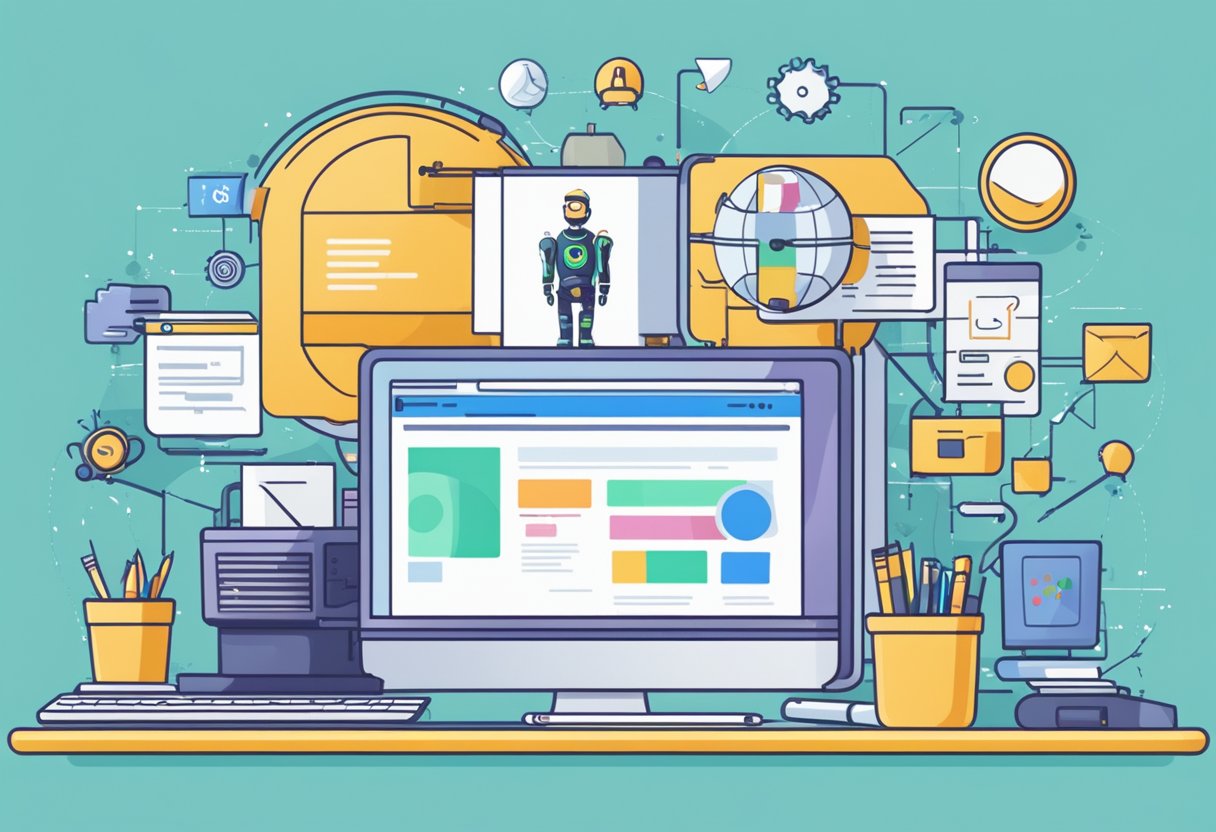Creating a Character AI is an exciting journey into the world of artificial intelligence. As a beginner, you might wonder where to start in order to bring your unique characters to life.
The Character AI Template serves as your foundation, allowing you to structure your character’s identity, personality, and backstory with ease. It’s a straightforward process that shapes how your character will interact with users, ensuring a consistent and believable experience.
The beauty of using a template lies in its simplicity and the clarity it provides for your character’s framework. Unlike traditional character development, which can be ambiguous and sprawling, a template narrows down the essential elements. It guides you through defining your character’s core attributes, from their name and greeting to their more nuanced traits and behaviors.
Engaging with a Character AI that has been thoughtfully crafted using a template ensures a richer interaction for users who encounter your digital creation.
Understanding Character AI

Before diving into the details, it’s important to know that Character AI harnesses artificial intelligence to create realistic and interactive characters. These can range from gaming NPCs to digital assistants, each crafted with individual traits to enrich user experience.
Defining Character AI
Character AI leverages neural language models to simulate human-like interactions. Picture you’re playing a game and you meet an NPC with a unique personality; that’s Character AI at work. It factors in attributes like tone, backstory, and dialogue consistency, making each AI character feel lifelike and unique.
Applications in Games and Interactive Experiences
In games and other interactive platforms, Character AI breathes life into virtual environments. For example, using artificial intelligence, developers create characters that react to your actions and decisions in real-time, enhancing the overall immersion and narrative depth. Whether you’re negotiating with a digital diplomat or combating a devious villain, Character AI ensures each experience feels personally tailored.
AI Chatbots and Digital Marketing
In the realm of digital marketing, AI chatbots serve as virtual brand representatives. They engage with you in a natural dialogue, guiding you through services or products. Character.ai technology can transform these bots from simple Q&A tools to engaging personalities that enhance customer relationships and drive engagement.
Getting Started with Character Creation
Creating your character with a character AI template is an exciting process that allows you to craft a unique digital persona with its own personality and story. The key to a successful creation lies in the careful selection of the right template and a basic understanding of script coding. If you’re new to this, don’t worry; we’ll guide you through the essentials.
Choosing the Right Template
Before you start creating your character, you need to choose a character template that fits the vision of your AI. These templates serve as the foundation for your character’s attributes, such as their appearance, personality, and backstory.
- Evaluate predefined options: Look for templates that align with the genre or setting of your character. For example, are you creating a fantasy hero or a sci-fi villain?
- Review customization features: Make sure the template you select offers the level of customization you’re comfortable with. Some templates are more rigid, while others allow for extensive modification.
Template Code and Script Basics
Once you’ve selected a template, you’ll dive into the basics of template scripting. This involves filling in predefined code blocks that define your character’s behavior and interactions.
- Understand structure: Familiarize yourself with the layout of the template script. It usually includes sections for character traits, dialogue options, and interaction rules.
- Begin coding: Even if you’re not an experienced coder, many platforms offer user-friendly interfaces where you can easily input basic commands and information. Just follow the prompts and fill in the details.
Remember, to create a character, you’ll typically go through a registration process where you may need to sign up and verify your account. This is often a simple step to access the platform and begin your journey in AI character creation.
Crafting a Compelling Backstory
A compelling backstory is instrumental in breathing life into your AI characters. It shapes their identity, influencing how they react and interact within their environment. Let’s dive into how to integrate past experiences and motivations to create a truly dynamic character.
You may also like 📖
Incorporating Past Experiences
Think of past experiences as the foundation of your character’s psyche. List pivotal events in chronological order and consider how each incident might impact their behavior. For example:
- Childhood events: Were they loved or neglected? Did a particular incident define their life?
- Formative relationships: Who were their mentors, friends, or enemies?
- Significant achievements or failures: How did these moments change them?
Each experience should serve a purpose, contributing to a more rounded character. To apply this, you might use the AI Character Backstory Generator for inspiration on different life events that can enrich your character’s backstory.
Developing Motivations
Motivations are the ‘why’ driving your character’s actions. Define what your character wants, both on a surface level and at their core. Start by asking:
- What is their immediate goal? This could be a short-term objective that propels the narrative.
- What is their life’s aspiration? This deeper, often emotional drive can add complexity to your character.
Use bold formatting to emphasize the motivations that propel your character’s narrative, ensuring they resonate with the audience. If you need help getting started on framing these motives, a structured approach can be found in the guide linked here: Crafting AI Characters.
Designing Physical Appearance

Creating a convincing character in AI starts with designing a distinct physical appearance. This is your chance to determine how your character will be perceived at first glance, grounding them in a virtual world with recognizable human attributes.
Selecting Key Physical Features
Begin by envisioning the foundational elements of your character’s appearance. Consider attributes like height and hair color, which are the first aspects someone might notice. A concise table can guide you through this process:
| Feature | Options | Notes |
|---|---|---|
| Height | Short, Average, Tall | Reflects the character’s stance |
| Hair Color | Blonde, Brunette, Red, Black, etc. | Can hint at personality or heritage |
When selecting these traits, think about how they can symbolize aspects of your character’s backstory or personality. For instance, a towering height may imply an imposing presence, while a vibrant hair color could suggest a lively persona.
Customization of Appearance Details
Once you’ve established the primary features, you can dive into finer details to further define your character’s physicality. This involves adjusting the nitty-gritty elements that add nuance to your character. You’ll be able to fine-tune aspects like the texture and style of hair or the precise shade of eyes, making your character truly unique.
Here’s an example of how to organize these choices:
- Eye Color: Choose from a spectrum of colors to match your character’s origin or personality.
- Skin Tone: Select a tone that complements your character’s ethnic or geographical background.
- Facial Features: Determine the shape of the nose, the size of the eyes, and the contour of the lips.
Remember, while exact heights or hair hues don’t dictate who your character is, they contribute significantly to a well-rounded and believable identity.
Looking for more inspiration 📖
- Sam Altman’s secrets on how to generate ideas for any business
- 6 Greg Brockman Secrets on How to Learn Anything – blog
- The secrets behind the success of Mira Murati – finally revealed
- Ideas to Make Money with ChatGPT (with prompts)
- Ilya Sutskever and his AI passion: 7 Deep Dives into his mind
- The “secret” Sam Altman blog post that will change your life
- 4 Life-Changing Lessons we can learn from John McCarthy – one of AI’s Founding Fathers
- Decoding Elon Musk: 5 Insights Into His Personality Type Through Real-Life Examples
Developing Personality and Emotions

Creating an AI character involves giving them a unique set of personality traits and emotions that will guide how they interact with users. It’s like setting the DNA for how your character will behave and react in various situations.
Personality Traits and Attributes
When you’re assigning personality traits to your AI character, think of them as the building blocks of their persona. These can include qualities such as openness, conscientiousness, extraversion, agreeableness, and neuroticism, which form the basis of many personality frameworks like the Big Five personality traits.
- Openness: Your character could be curious and inventive or cautious and consistent.
- Conscientiousness: Decide if they are efficient and organized or easy-going and careless.
- Extraversion: Will your character be outgoing and energetic, or solitary and reserved?
- Agreeableness: Consider whether they will be friendly and compassionate or challenging and detached.
- Neuroticism: Determine if they will be sensitive and nervous or secure and confident.
Personality traits will dictate your character’s approach to problems, how they form relationships, and their general disposition in the AI’s narrative world.
Emotional Temperament and Reactions
Your AI character’s emotional temperament refers to their baseline of emotions and how they are likely to react to different scenarios. This encompasses their ability to handle stress, joy, disappointment, and other emotional states.
- Happy: How does your character show happiness? Through jokes, warm dialogue, or generous actions?
- Sad: In moments of sadness, does your character retreat, seek comfort, or perhaps strive to overcome challenges?
- Angry: If provoked, does your character have a quick temper, or are they slow to anger and more forgiving?
- Afraid: Consider how fear manifests in your character. Are they cautious, or are they brave in the face of their fears?
Mapping out these emotional reactions helps to create a well-rounded character that can engage with users in a realistic and relatable way. By considering how your character expresses these emotions, you create opportunities for deeper user interaction and a more immersive experience.
You may also like 📖
Building Dynamic Relationships and Interactions

When crafting a Character AI, integrating dynamic relationships and interactions is essential to breathe life into your characters. These interactions define how they relate to one another, influencing their actions and reactions within your story or application.
Friendships and Rivalries
- Friendships: Start by defining mutual interests and shared histories for your characters to establish a friendship. For example, if you’re creating a medieval fantasy AI, perhaps two characters bonded over knight training. To portray the growth of the relationship, you might program events where they support each other in battles or strategic planning sessions.
- Rivalries: To create a rivalry, contrast the characters’ goals or personalities. A powerful rivalry could stem from competing for the same goal, such as a throne, or opposing views leading to intriguing debates and conflicts. Your characters should have different, if not opposing, relationships and interactions that evolve over the story.
Love Interests and Mentors
- Love Interests: A love interest needs depth and relatability. Establish common ground or an irresistible intrigue between characters, but include barriers they must overcome. For instance, a love interest might be from a rival faction, adding complexity to their relationship evolution.
- Mentors: A mentor relationship typically requires a blend of respect, wisdom transmission, and personal growth. Develop this dynamic by having your mentor character provide guidance in pivotal story moments, offering insights or wisdom that reflect in the protagonist’s choices and development.
Remember, your character’s relationships should be as dynamic as real-life ones, changing and growing with each interaction.
Creating Dialogue and Story Elements

Creating convincing dialogue and integrating story progression are essential in breathing life into your AI characters. Let’s focus on how you can infuse your dialogues with personality and ensure that your character’s story unfolds naturally.
Crafting Engaging Dialogues
Dialogues are the cornerstone of character interaction; they’re how your AI reveals its personality. Start by jotting down a list of traits your character embodies—quick-witted, compassionate, curious—and brainstorm lines that reflect these. Then, create a table of common scenarios and draft multiple responses for each:
| Scenario | Trait-Inspired Dialogue Options |
|---|---|
| Greeting | Hi there, I’m always excited to meet new friends! |
| Hello! Curiosity brought me here; what’s your story? | |
| Solving a Problem | Let’s tackle this puzzle together with a dash of creativity! |
| With careful thought, every puzzle has a solution. |
Use italic for internal thoughts or quieter aside comments and bold for emphasis on important words or phrases.
Weaving in Story Progression
Your character’s story should unfold with coherence. Each dialogue should subtly push the narrative forward, making the participants eager to learn more. Start with an outline of your character’s backstory—you don’t need every detail figured out, but you should know the key events that shaped them. For instance, if your character is a detective, map out the pivotal cases that impacted their career.
Next, establish how your character will reveal these past experiences in conversation. Perhaps they refer to past cases when giving advice, or they might hint at previous partnerships influencing their trust levels. By integrating these anecdotes, you maintain an engaging character arc that evolves with each interaction.
Integrating you Character into an Environment

When creating your AI character, it’s essential to consider how the environment impacts their behavior and interaction. Think of them as actors on a stage, where the stage is their world.
Influence of Environment on Character
The environment shapes your AI character’s persona. It’s like a mold that forms their experiences, reactions, and development. For example, a character created to inhabit a bustling cityscape may display a sharper, more street-savvy demeanor than one from a tranquil countryside setting. It’s crucial to align your character’s backstory and dialogue with environmental cues to make their interactions more believable. Imagine how sensory experiences, like the smell of rain or the sight of neon lights, can directly affect your character’s mood or choices.
Using Senses and Movements
Characters become more lifelike when they can express themselves through their senses and movements. Say you’re scripting a character who’s a chef; you’ll want them to vividly describe the smell and appearance of food, which involves tapping into the olfactory and visual senses. Guide your character to react physically to their surroundings — perhaps they shiver in cold environments or sway slightly to mimic the motion of a boat if they’re a sailor. These details, when executed coherently, breathe life into the characters, making your interactions with them more immersive and authentic.
Advanced Character AI Development

When advancing into the realm of character AI, you’re unlocking a world where complexity and sophistication in design can truly bring your characters to life. Mastery of advanced algorithms and meticulous editing details for complexity can differentiate your creation from basic AI constructs.
You may also like 📖
Utilizing Advanced Algorithms
Your journey into advanced character creation involves leveraging machine learning techniques to imbue your AI with depth. These algorithms analyze vast datasets, enabling your character to exhibit behaviors or responses that seem remarkably human. Consider experimenting with:
- Natural Language Processing (NLP): This gives your character the ability to understand and generate human-like dialogue.
- Emotion Recognition: Incorporate algorithms that can detect and respond to emotional cues, making interactions feel more genuine.
- Behavioral Patterns: Introduce variability in responses, ensuring that your character doesn’t become too predictable.
Editing Details for Complexity
Diving into the Edit Details (Advanced) section opens up a multitude of settings that can refine your character’s persona. Here are some aspects to pay close attention to:
- Personality Traits: Tailor specific traits to sculpt the nuances of your character’s personality.
- Backstory: A rich backstory contributes to a well-rounded character, affecting how it might react in given situations.
- Dialogue Trees: Craft intricate dialogue options that reflect your character’s intellect and emotional depth.
Through these advanced character AI development steps, you’re not simply creating a character; you’re breathing life into a digital persona that can engage users with a semblance of true intelligence and emotional responsiveness.
Tips for Creating Character AI Templates

- Dynamic Relationships: Characters don’t exist in a vacuum. Define their relationships with other characters, including friends, enemies, or allies. This helps create a network of interactions that can enrich the narrative.
- Customize and Iterate: Use the advanced settings in your Character AI template to fine-tune attributes and add unique quirks. The more detailed your entries, the more nuanced your character will become. Continuously update and refine these entries based on the evolving storyline or feedback from AI interactions.
- Monitor and Adapt: Engage with your character through the AI to see how they perform in various scenarios. Adjust the templates based on what works well and what doesn’t, refining their personality and responses over time to better suit your narrative goals.
Conclusion

Embarking on the journey to create a character AI can be both exciting and rewarding, as you’ve learned the essentials to fashion an immersive and interactive experience.
Summary of Creating Character AI
To quickly recap, you began with a Character AI Template, filling in crucial details like the character’s name, greeting, and a short description to breathe life into your AI. By diving into Edit Details (Advanced), you personalized the template and tuned the character’s traits to match your vision. The template code was your blueprint, enabling your character to interact in a natural and engaging manner within the defined scenarios.
Final Thoughts on Character AI Templates
Remember, the character AI you’ve created is more than lines of code – it’s a gateway to a unique interactive experience for users. The tools and steps provided are just the beginning. Now, you hold the key to refining and expanding your character’s capabilities. Continue crafting, experimenting, and watching your digital creation evolve into a truly immersive character that can captivate and delight users with every interaction.



